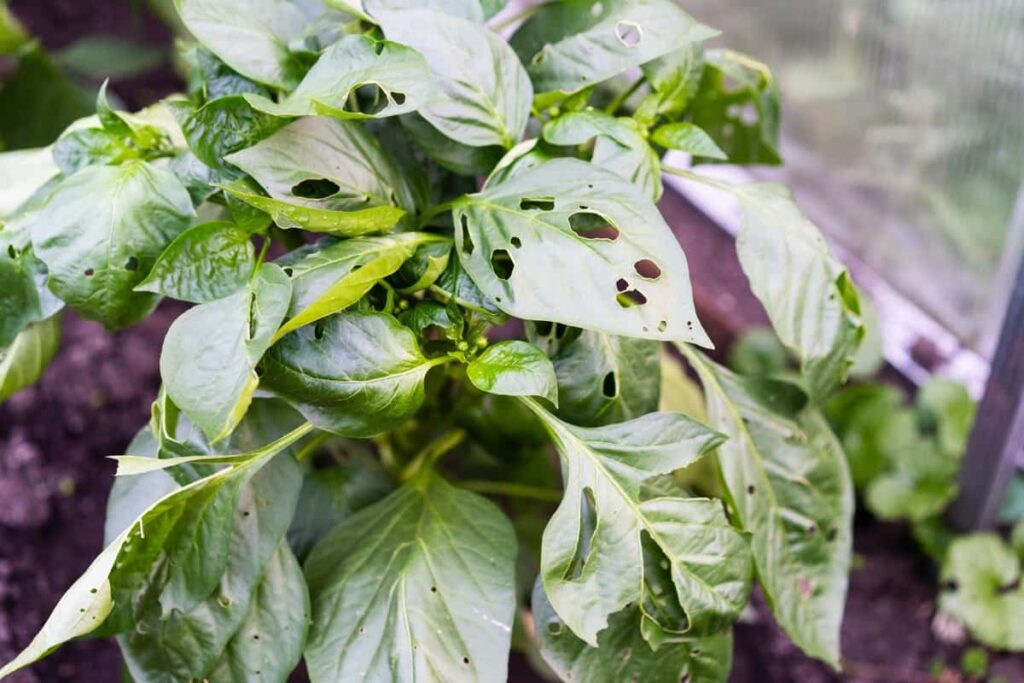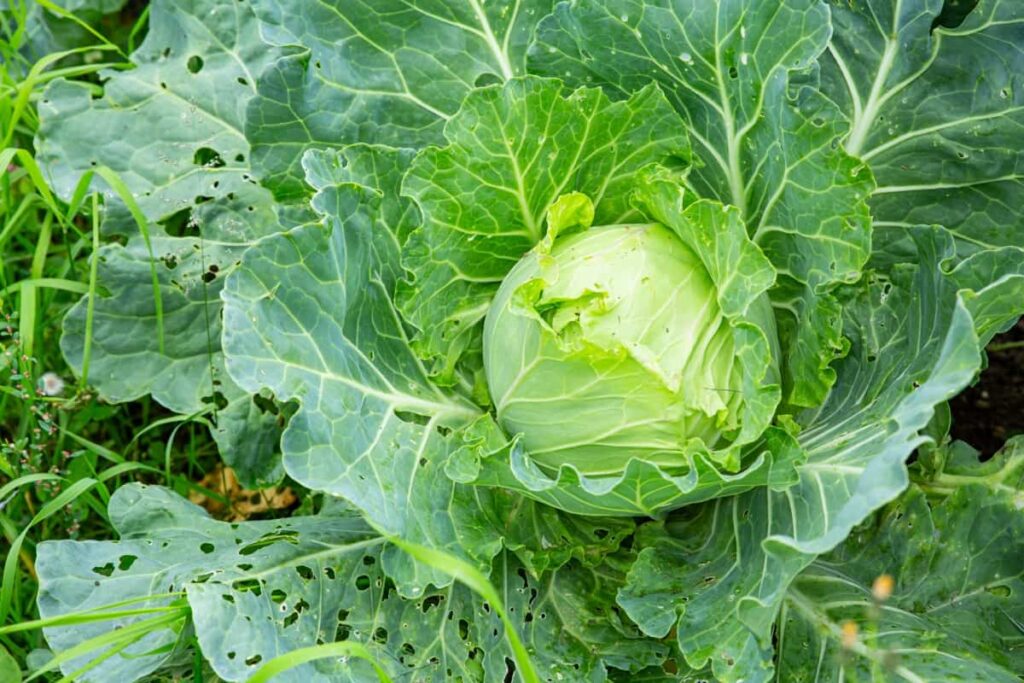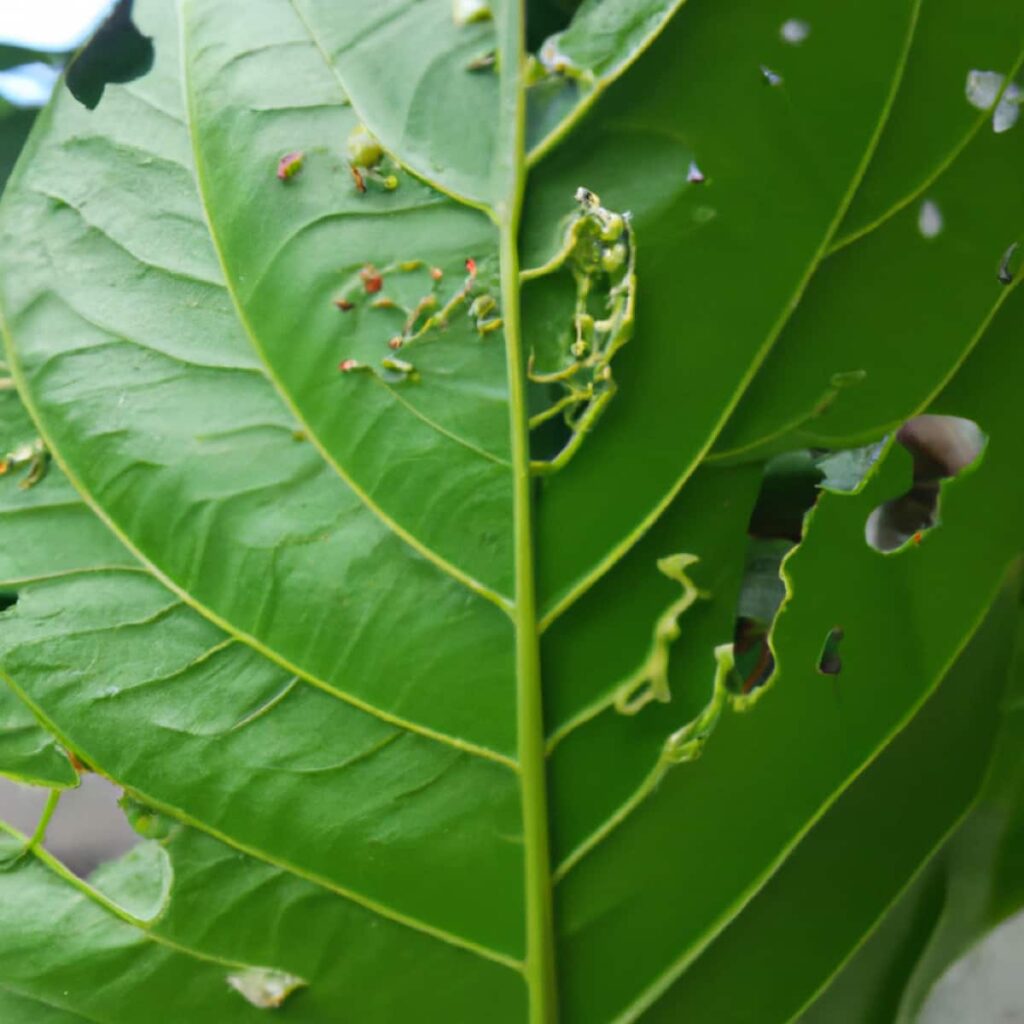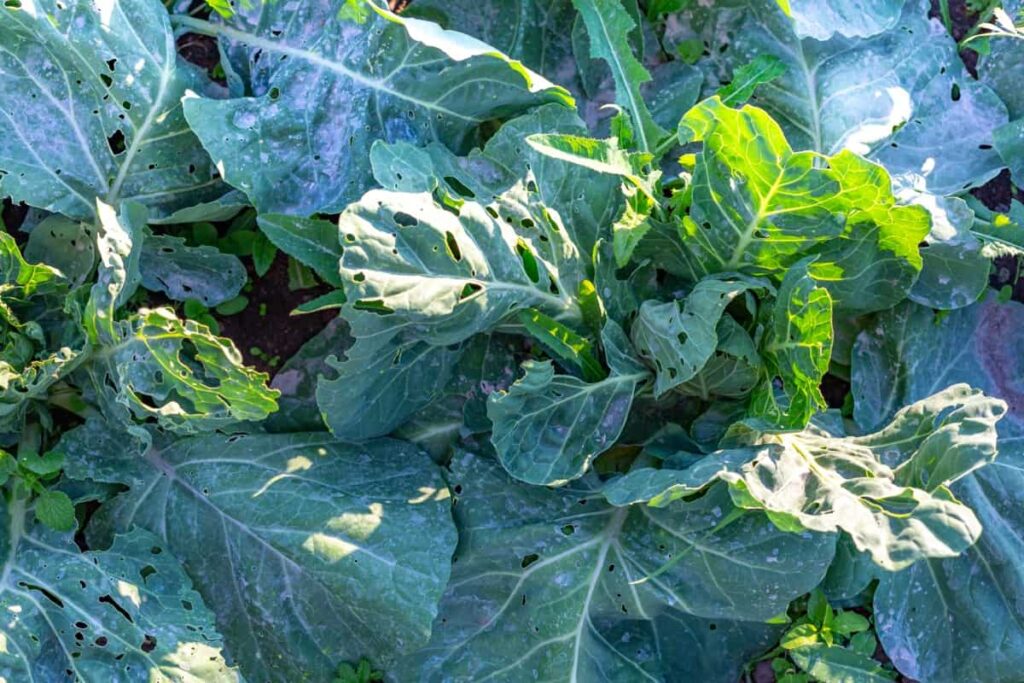One of the most difficult challenges you may encounter as a gardener is dealing with pests. Pests can cause problems in your garden and cause significant harm, ranging from chewing insects to disease-causing fungi. You can, however, successfully manage this pest and keep your garden healthy and blooming if you have the proper knowledge and tools.

The leaf miner is one such pest. It is a small fly larva that burrows into the leaves of plants, forming winding passageways that can cause leaf distortion and eventually weaken the plant. We will delve into the world of leaf miners in a forthcoming blog post, addressing their identification, symptoms, causes, and, most importantly, how to manage them using cultural, biological, and chemical methods. Stay tuned to find out how to keep these destructive pests out of your yard!
How to Manage Leaf Miners in Home Garden
What are Leaf Miners?
Leaf miners are pests burrowing into leaves and feeding on tender plant tissue, leaving squiggly trails beneath the foliage surface. They are found across the globe, with different types having preferences for particular host plants. Leaf miner damage is easily recognizable and can be controlled and prevented effectively when dealt with early on.
Leaf miners refer to larvae produced by insects from several families that burrow and feed within the tissue layers of leaves. Most leaf miner larvae originate from various types of flies, though they can also come from moths and beetles. The adult insects lay their eggs on leaves, and larvae begin feeding as soon as they hatch.
Lifecycle of Leaf Miners
- Leaf miners have a life cycle that lasts 30 to 40 days and can repeat several times during the growing season.
- The pupae overwinter in garden soil near preferred plants and develop into adult flies in spring.
- Female flies lay up to 250 eggs on the undersides of leaves, which hatch in 2 to 6 days.
- Larvae emerge and tunnel through the middle layer of leaf tissue for 2 to 3 weeks, staying just below the surface.
- After this, larvae drop to the ground and develop into pupae, which become adult flies in another two weeks.
- Leaf miners can move from one host plant to another as new host plants become available throughout the year.
- Development of leaf miners continues all year.
In case you missed it: How to Create Productive Flower Garden: A Complete Guide for Beginners

Types of Leaf Miners
- The larvae are segmented, caterpillar-like creatures that tunnel through the leaf tissue to feed.
- There are many different types of leaf miners. Still, Spinach and Vegetable leaf miners are common in home gardens.
- The Spinach leaf miner creates irregular-shaped patches on leaves, feeds on beets, chard, and spinach, and has gray or brown adult flies.
- The Vegetable leaf miner creates winding snake-like patterns on leaves, feeds on many different types of vegetables, and has yellow and black adult flies.
Ways to Spot Leaf Miners Presents
Leaf miners can be recognized by their distinctive trails or squiggly lines on plant foliage. Eggs can be detected on the undersides of leaves, appearing as clusters of tiny oval white specks. Larvae are in the trails and splotchy areas, burrowed just below the leaf surface.
Identification of Leaf Miners in Home Garden
Identifying leaf miners in the home garden can be done by observing adult flies and larvae. Adult leaf miners are small, black flies with transparent wings and a yellow triangle between the bases of their wings. Some species may have a silvery gray color on their thorax with a yellow area behind the eyes. Larvae are yellow, cylindrical maggots that feed within the layers of the leaf surface. It can be difficult to identify between the larvae and pupae of different species as they are similar in appearance, with brown, seed-like pupae and yellowish maggots.
Garden Plants which are Susceptible to Leaf Miners
Leaf miners can affect a wide range of garden plants, including both food crops and ornamental plants. Food crops susceptible to leaf miners include leafy greens like kale, lettuce, spinach, beet greens, and Swiss chard, as well as other vegetables like beans, beets, cabbage, cucumber, eggplant, melons, peas, peppers, potatoes, and tomatoes.
Ornamental plants at risk include aster, chrysanthemum, dahlia, daisy, marigold, petunia, sunflower, violet, and zinnia. At the same time, trees and shrubs like arborvitae, azalea, dogwood, and oak can also be affected. Leaf miners typically feed on foliage and rarely cause damage to fruits or vegetables.
In case you missed it: Date Palm Cultivation in Karnataka: A Step-By-Step Guide to Planting to Harvesting for Beginners

Symptoms of Leaf Miner’s attack on Home Garden
- Leafminers attack many vegetables and flower hosts.
- Adult female leafminers puncture leaves and petals to feed on exuding sap, causing punctures to turn white and giving the foliage a stippled appearance.
- Larvae leave twisting trails (mines) as they feed beneath the leaf surface, becoming longer and wider as the larva grows.
- Mining has little impact on plant growth and rarely kills plants, but heavy damage can slow growth and cause infested leaves to drop.
- Mines start opaque and eventually turn brown.
- Damage is mostly cosmetic but can be particularly destructive to edible leaf crops like lettuce and spinach.
- Repeat infestations can weaken plants and make them more susceptible to leaf drops and other pests and diseases.
- Smaller plants and seedlings are more prone to severe damage.
- Untreated damage can result in losing an entire crop of edible leaf crops such as lettuce and spinach.
Leaf Miners Management in Home Garden
Leaf miners are a common pest in home gardens that can cause significant damage to plants, particularly edible leaf crops like lettuce and spinach. Effective management of leaf miners requires understanding their identification, symptoms, and causes.
Cultural practices such as maintaining a clean garden and removing plant debris, as well as biological control methods like introducing parasitic wasps, can help manage leaf miners without resorting to chemical sprays. If insecticidal sprays are necessary, care must be taken to avoid harming beneficial insects and pollinators. Regular monitoring of plants is key to preventing severe damage and crop loss.
In case you missed it: Top 10 Vegetables to Grow in Your Garden: A Complete Guide for Beginners

Cultural Management of Leaf Miners in Home Garden
- To avoid the spread of leaf miners, inspect transplants for indications of leaf mines and white stippling before planting and destroying infested plants.
- To avoid larval development, clip and destroy infested leaves.
- Plant a variety of crops in one location, as monoculture plantings are more prone to pest infestations.
- Use a floating row cover over plants to keep adult flies out and eggs from hatching. It should be noted, however, that this method is only successful when planting in an area that has not previously been infested with leaf miner pupae.
- Excessive nitrogen fertilization can lead to an increase in leafminer infestations.
- Weeds close to vegetable gardens and fields to be leaf miner hosts should be removed.
- Remove weed plants and thoroughly plough crop residues after the final harvest to remove food sources and inhibit pupal development.
- Crop plots should be rotated.
- Use adequate irrigation to maintain your plants healthy and stress-free.
- Consider planting resistant varieties, such as tomato varieties with curled leaves or high foliar acyl sugar, cucumber varieties with high numbers of trichomes, and spinach varieties with fewer leaf pores.
- Implementing these cultural control methods can help prevent and manage leafminer infestations in home gardens without using chemical sprays.
Biological Management of Leaf Miners in Home Garden
- Biological control methods can help manage leaf miners in home gardens by utilizing natural predators such as ants, predatory wasps, and spiders, which attack adults and larvae.
- Parasitic wasps, including Opius dissitus and eulophid wasps, can also be effective control agents by depositing eggs inside the body of the leafminer larva, which is gradually consumed as the parasitoid develops.
- However, the repeated use of broad-spectrum insecticides can inadvertently kill these beneficial predators and parasitoids, leading to outbreaks of leafminers.
- Commercially available wasps, such as Diglyphus isaea and Dacnusa sibirica, have successfully integrated pest management programs in greenhouses.
- Although nematodes can assist in IPM control of many pests, current research suggests they are impractical for controlling leafminers.
- Utilizing these biological control methods can help reduce the use of chemical pesticides and promote a healthier and more sustainable garden ecosystem.
In case you missed it: Key Rules to Begin a Terrace Garden in India: Explained in Simplified Steps

Chemical Management of Leaf Miners in Home Garden
- If available, an integrated pest management approach is recommended, including preventive measures and biological treatments.
- Broad-spectrum insecticides (organophosphates, carbamates, pyrethroids) prevent egg-laying but do not kill larvae, can decrease natural enemies, and cause resistance development.
- In rotation, compounds such as abamectin, chlorantraniliprole, acetamiprid, spinetoram, or spinosad can be used to avoid resistance.
- Insecticides that penetrate the leaf (with translaminar activity) are the most effective.
- Adjuvants and surfactants can improve insecticide efficacy by increasing adherence to leaf tissue.
- In areas with intensive vegetable production, insecticide resistance in leafminer populations is prevalent.
- Chemical recommendations for leafminer control in Utah include abamectin, spinosyns (spinosad, spinetoram), pyrethroids (gamma-cyhalothrin, lambda-cyhalothrin, permethrin, pyrethrin), neem (azadirachtin), insecticidal soap (M-Pede, Safer’s), and oils (horticultural oil, plant oils like peppermint and rosemary).
- Apply insecticides only when necessary to conserve natural enemies, and rotate among classes to avoid resistance development.
- Broad-spectrum insecticides can harm bees, so carefully read product labels and only apply when the risk to bees is low.
- Integrated pest management (IPM) is the preferred approach for long-term control, combining cultural and biological control practices with occasional, less-toxic insecticide applications based on the action threshold.
Organic/ Natural/Home Remedies Management of Leaf Miners in Home Garden
Natural/Home Remedies Management of Leaf Miners in Home Garden
- Use yellow sticky traps to attract and trap adult leaf miner flies.
- Remove and destroy infected leaves as soon as possible to prevent the further spread of the larvae.
- Use reflective mulches or aluminum foil to cover the soil around plants, which can help deter egg-laying by adult flies.
- Introduce predatory insects into the garden, such as ladybugs, lacewings, and parasitic wasps, to help reduce the number of leafminers.
- Spray a solution of 1 part vinegar to 3 parts water on affected leaves to help deter adult flies from laying eggs.
- Apply a mixture of garlic and chili pepper spray to affected leaves to repel adult flies and kill any larvae present.
- Spray a solution of dish soap mixed with water on the affected leaves to suffocate the larvae.
- Apply a homemade insecticidal soap with one tablespoon of mild liquid and water to the affected leaves.
In case you missed it: 20 Key Rules for Setting Up a Budget Hydroponic Garden at Home

Organic Control
- Use neem oil products (Azadirachtin) against larvae. Spray early morning or late evening. Neem oil penetrates the leaves and reaches some larvae inside the tunnel.
- Foliar applications of the entomophagous nematode, Steinernema carpocapsae, can reduce the leafminer population.
- Other biological controls of leaf miners include parasitoids (e.g., Chrysonotomyia punctiventris and Ganaspidium hunteri) and nematodes (e.g., Steinernema carpocapsae).
Preventive Measures to Control Leaf Miners in Home Gardens
- Choose garden variety plants that are less susceptible to leaf miners.
- Inspect plants for leaf miner activity before purchase, and do not introduce new plants already infested into your home garden.
- Keep the garden area free of weeds, which can serve as hosts for leaf miners.
- If possible, Use row covers to protect plants from adult leaf miners.
- Monitor plants weekly for signs of leaf miner activity, especially during the growing/vegetative season.
- Remove and destroy any infested leaves by crushing or burying them or feeding them to livestock if possible.
- Dispose of plant debris promptly after harvest, especially for plants like tomatoes that are particularly vulnerable to leaf miner infestations.
- Use yellow sticky traps or glue traps to monitor adult leaf miner activity.
- Avoid broad-spectrum insecticides that can kill beneficial insects and disrupt natural pest control mechanisms.
In case you missed it: Top 15 Effective Organic Home Remedies for Garden Pests: Proven Control Methods

Conclusion
Managing leaf miners in home gardens requires a combination of cultural, biological, chemical, and organic methods. Early identification of symptoms, such as meandering tunnels and blotches on leaves, is crucial. Preventive measures, including choosing resistant plant varieties, checking transplants, and removing crop debris, can help reduce the incidence of leafminer infestations.
Biological control using nematodes, parasitoids, and organic methods such as neem oil and insecticidal soap can be effective. Chemical control should be a last resort, and rotating between different classes of insecticides is essential to prevent resistance. Integrated pest management, combining different methods, is key to achieving long-term control of leaf miners.
- Budget Friendly Sheep Shed Ideas: Cheap and Low-Cost Tips
- How Much Do Cattle Farmers Make: Revenue Streams in Cattle Farming
- Management Pests and Diseases in Your Cotton Field
- Sheep Farming Business Plan for Beginners
- Aquaponic Farming at Home: A Step-By-Step Guide
- Profitable Village Farming Business Ideas in 2024
- High-Yield Aquaculture: Fast-Growing Fish for Farming
- Effective Fish Pond Construction Techniques for Beginners
- Irrigation and Water Management in Pineapple Farming
- Blossom to Harvest: Mastering Flowering and Pollination in Papaya Farming
- Pig Fattening Essentials: From Selection to Sale for Beginners
- Raising Wagyu Cattle: A Complete Guide for Premium Beef Production
- Soil Types and Their Water Holding Capacity
- Optimizing Irrigation Schedules for Coconut Groves for Enhanced Yield
- Espresso Your Garden: Coffee Grounds for Healthier Acid-Loving Plants
- The Best Soil Mix for Snake Plants: How to Mix Your Own Snake Plant Soil
- Green Thumb Success: Expert Tips for Cultivating Greenhouse Beans All Year Round
- Bloom All Year Round: The Ultimate Guide to Indoor Hyacinth Care
- Eco-Friendly Gardening: How to Make Liquid Fertilizer from Kitchen Waste
- Ultimate Guide to Grow Anise in Pots: Explore Seed Propagation to Harvesting
- Guide to Raising Chester White Pigs: Discover Breed Facts to Growth Management
- Mastering the Elegance: The Ultimate Guide to Weeping Cherry Tree Care, Planting, and Maintenance
- Ultimate Guide to Planting Garlic in Grow Bags: Growing Strategies for Beginners
- How to Fix Spider Plant Leaf-Related Problems: Natural and Organic Remedies
- 10 Reasons Why Your Tulsi Plant is Shedding Leaves: Home Remedies and Solutions
- Optimizing Growth and Yield: The Advantages of Palm Bunch Ash Fertilizer
- Utilizing Neem Oil Extract as a Natural Pesticide for Hydrangea
- From Soil to Harvest: Various Ways in Which Farmers Can Use AI Tools
- Steps to Encourage and Induce Citrus Flowers: A Comprehensive Guide
- How to Fix Snake Plant Leaf-Related Issues: Natural and Organic Remedies
- Transform Your Garden into a Fragrant Oasis with Raat Ki Rani (Night Blooming Jasmine)
- Discover the Ideal Chicken Breeds for Philippine Farms
- How to Create a Poultry Egg Farm Business Plan for Profits
- Grow Lemon Cucumbers Like a Pro: Insider Techniques for Bountiful Yields
- Ultimate Guide to Caring for Your Pink Princess Philodendron: Tips for Thriving Variegation
- Areca Nut Profit Per Acre: Calculating Yield and Cost of Cultivation
